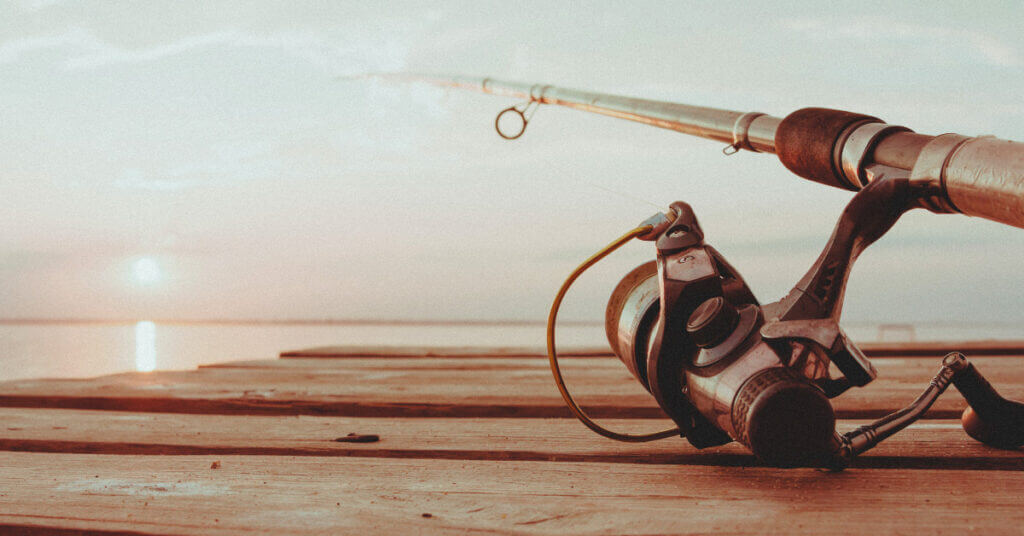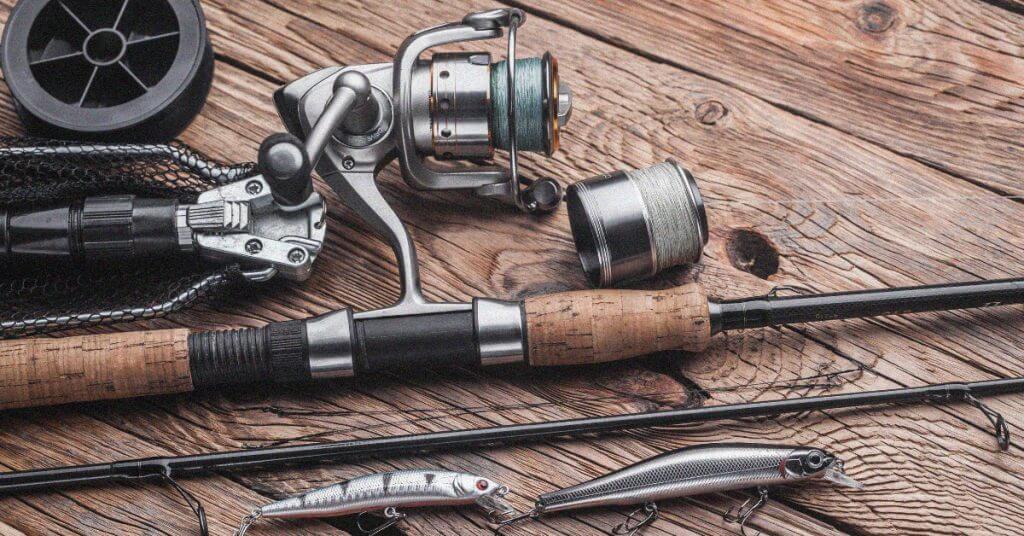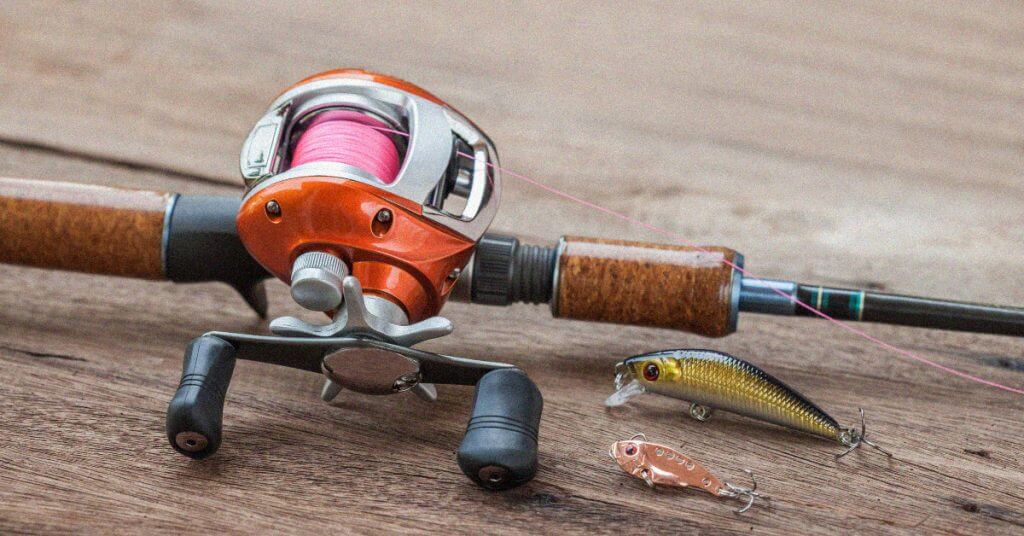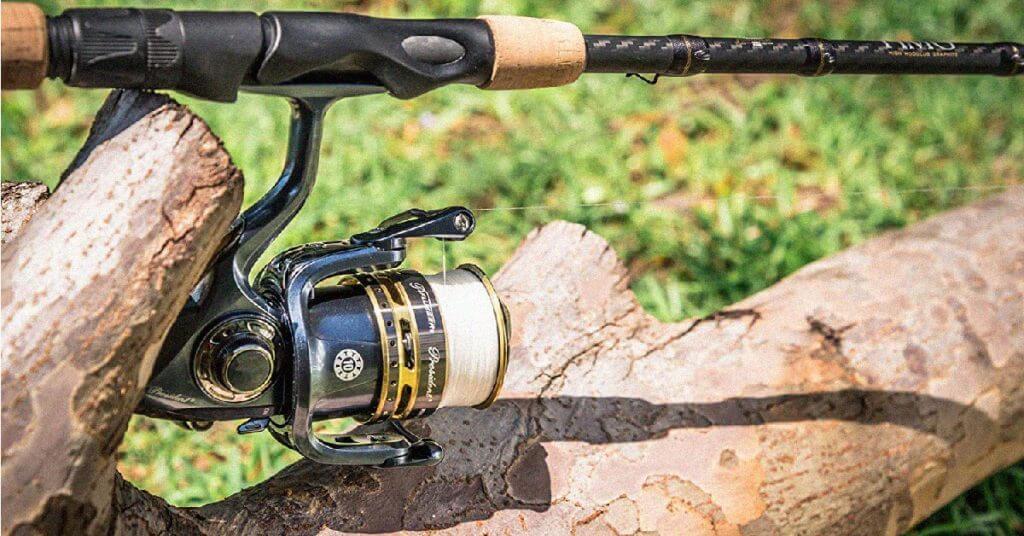Spinning reels are the most popular types of reels on the market for a variety of reasons. They are easy to use and are great for using light lures. They cast a mile and they are optimal for cork fishing.
In order to choose the right inshore spinning reel you’ll need to take these qualities into consideration before your next purchase.
I’ve grown up using some of the best inshore spinning reels in the marshes of South Louisiana and have used upwards of 80 spinning reels throughout my fishing career.
I’ve taken that experience and combined it with a weeklong fishing trip to the marshes of South Louisiana where I compared some of the newer reels on the market, with some of my all-time favorites.
Top 3 Inshore Spinning Reels on the Market
As a quick summary, here are my top three choices for best inshore spinning reels based on my research and testing.
Table of Contents
Testing Procedure
Since one of the most important features of an inshore spinning reel is how the reel holds up against bigger fish like speckled trout, redfish, and flounder, I wanted to fish a location where I would be able to catch these larger fish.
I headed to a friend’s camp along the shoreline of Lake Catherine in Southeast Louisiana. It’s there that I fished for five days and was able to rank numerous reels (and stock my freezer with ziplock bags full of fish).
During my time on the water I specifically focused on the following qualities that each reel possess:
- Corrosion Resistance: Saltwater can wreak havoc on a spinning reel. During my test I looked at the materials that were used to make the reel. Would these materials hold up to saltwater intrusion?
- Drag System: Having a quality drag is one of the most important qualities that an inshore spinning reel can possess.
Inshore fish are larger and stronger than freshwater fish so it’s important that the reels drag system performs consistently and is able to tire out the fish during its initial run.
- Weight: Inshore reels are typically on the heavier side due to the more durable materials that are used to make them.
They also hold more line and have larger ball bearings inside. Having an inshore spinning reel that is lightweight will allow you to fish longer without tiring during those all-day inshore trips.
- Ball Bearings: The number and quality of ball bearings a reel has is one of the most important factors to look at when it comes to choosing an inshore spinning reel.
Having high-quality ceramic bearings or stainless steel inside the reel can make a big difference in overall performance.
- Price: Is the reel worth the price? Value is important! We’ll look at all the key features of each reel and let you know if it’s worth the number on the price tag.
Best Overall Inshore Spinning Reel
PENN Slammer IV Spinning Reel
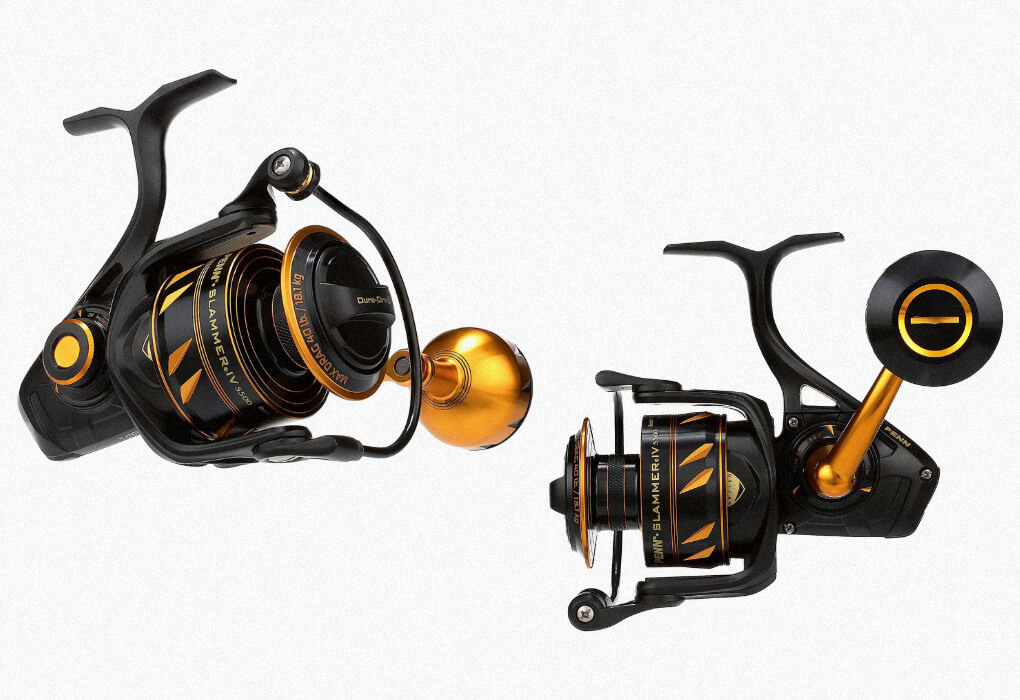
Specs
- Type: Spinning
- Gear Ratio: 6.2:1
- Weight: 11 oz.
- Bearings: 8+1
- Line Capacity: 8/125
Pros
Cons
Why We Chose It
To preface this review, I’ll start off by saying my previous go-to inshore spinning reel was PENN’s Battle III.
However, during my test of the PENN Slammer IV, I was blown away with the performance of this inshore masterpiece.
Let’s kick things off with the material build of this reel. It’s got a full metal body and side plate that helps keep everything aligned properly when the reel is under pressure.
Reels made with cheaper materials tend to flex, resulting in the pinion and gears being misaligned during stress. This affects the smoothness of the reels retrieve and also reduces the lifespan of a reel over time.
PENN has also done a nice job (as they do with all of their spinning reels) with the CNC machined gears which are cut from one block of metal which makes for a PERFECT fit.
And you can tell when you reel this thing!
The 9 stainless steel ball bearings made for one heck of a retrieve.
I tested this rod in a school of speckled trout free-lining live shrimp. I was able to put 12 speckled trout in the ice chest with one of the trout measuring 19 inches.
When this tank hit, he made a hard run which the 20lb. max drag system handled with ease.
The HT-100 Carbon Fiber Drag System made a big difference as the drag pull was smooth and without any sporadic jerks.
I was also able to try out the Slammer’s Automatic Bail system which was a real bonus.
For those who have never used this live bait feature, basically it’s a drag system that allows for the fish to eat the bait and run with it.
The drag is light enough to allow the fish to swim away with the bait without feeling any tension in the line. I actually caught three specks using this feature and it performed splendidly!
The only downside that I can see is that the reel is slightly heavy, but that’s only due to the metal sides on the reel.
In the long run I’d rather a slightly heavier reel if the reel provides a lifetime of use and holds up to saltwater conditions like I believe the Slammer IV can.
If a metal body is a factor in your decision I can point you to the Lew’s Custom Speed Spin Reel which has an all-aluminum body and only weighs 8 oz.
However, this reel is a step beneath the Slammer IV in the casting and retrieving department.
Overall the PENN Slammer IV is a fantastic reel and offers so many sizes that it will fit any type of saltwater fish you are targeting. Add this reel to your saltwater collection and thank me later!
Best Budget Inshore Spinning Reel
Abu Garcia Elite Max Spinning Reel
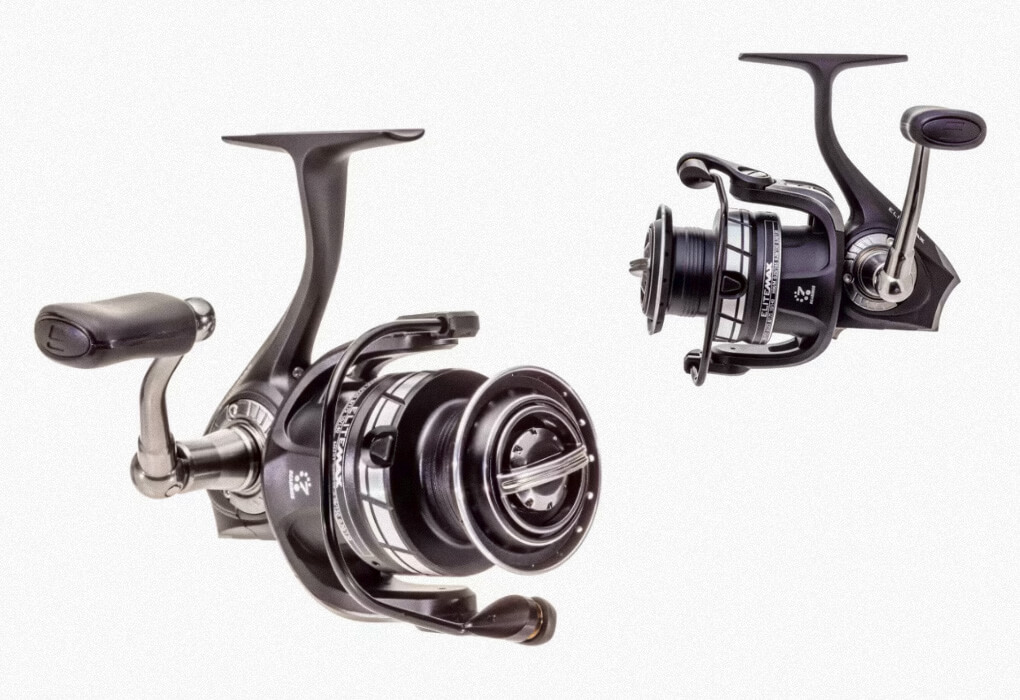
Specs
- Type: Spinning
- Gear Ratio: 6.2:1
- Weight: 8.5
- Bearings: 6+1
- Line Capacity: 8/175
Pros
Cons
Why We Chose It
I’ve used Abu Garcia reels since I was a kid so it was no surprise that the Elite Max lead the pack when it comes to cramming a bunch of features into a well built, durable spinning reel that has an affordable price tag attached to it.
When testing this reel the biggest thing I noticed was its ability to cast farther than any of the other budget reels that I tried.
It’s because of Abu Garcia’s patented Rocket Spool Lip Design which translates to the line moving back and forth at a slower speed. Because there is less line rebound on the spool the line flows off the reel smoother.
This explains my long casts when using it. I was able to use my trolling motor to ease up to a school of seagulls diving on baitfish that were being chased by speckled trout.
I was using a popping cork with a Matrix Shad on a 3/8oz. Jig head and was able to cast into the action from nearly 50 yards away. I managed eight speckled trout that all measured 14”-16”.
The Carbon drag system had a high-end feel and sound to it which was a bit of a surprise being that the drag is usually where companies cut corners on budget reels.
One bad thing about this reel is that it doesn’t come in any size smaller than a 30 so for those looking for a smaller reel for your inshore fishing you’ll need to look elsewhere.
Fortunately there is a reel that is very comparable to the Elite Max and that is the Plueger President Spinning Reel which comes in sizes 20 and 25.
Overall, the Abu Garcia Elite Max Spinning Reel scored impressive marks and often performed like a mid-range spinning reel.
I would recommend it for those fishermen who are beginners and looking for a reel to start with. The price point and all the features make it a definite winner in my book!
Best Tournament Grade Inshore Spinning Reel
Shimano Stella FK Spinning Reel
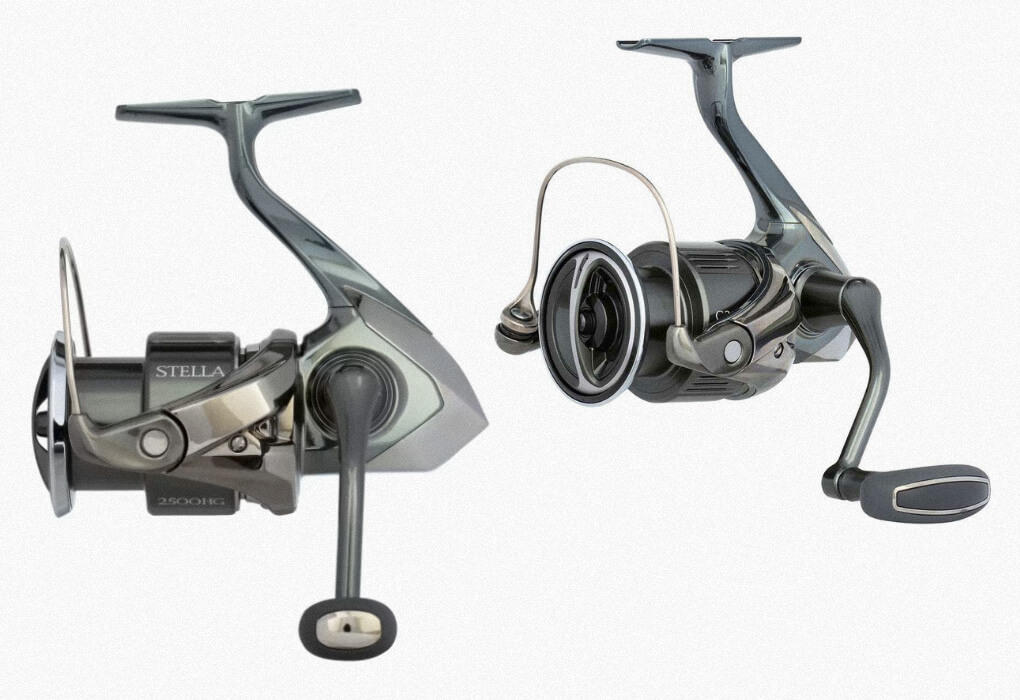
Specs
- Type: Spinning
- Gear Ratio: 5.1:1, 6.2:1
- Weight: 6 oz.
- Bearings: 12+1
- Line Capacity: 6/110
Pros
Cons
Why We Chose It
Whoa baby…where do I start? Let’s begin with the most noticeable feature that I noticed when I tested this reel: THE RETRIEVE.
I’ve owned a lot of spinning reels in my life but I have to say that the retrieve on the Stella is the smoothest I have ever used in my entire life.
This reel is like going from a stick shift to an automatic transmission. While testing the reel there were some moments where I thought this reel was running on some sort of phantom power.
It seemed as if the handle was turning itself!
The spool turns with the slightest touch or effort due to what they call the Infinity Drive system.
Shimano claims that this reel is the lightest winding reel in the industry because of its Infinity Drive.
So instead of having the main shaft supported by the pinion gear, it’s now supported by a new low friction bushing that decreases the resistance big time!
Also the rigidity of the reel is obvious. There’s no give or flex in any section of the reel. The reel works in unison without any give in any of the gears, reel seat, or spool.
The Infinity Loop and Anti Twist Fin are responsible for the best level winding I have ever felt. There is no sagging tension whatsoever with this reel.
I paired this reel with my Falcon Lowrider Spinning Rod during my test. I was able to catch a variety of fish including a 22 inch flounder off of a grassy point with water flowing around it.
I was using a cork with a live shrimp and managed to get the doormat close enough to the side of the boat where I could net him.
This is a really special reel.
It’s like somebody dared Shimano to use only premium parts on this thing. It’s made with the finest materials including liberal use of C14 and 13 total ball bearings (the more bearings, the smoother the reel)
It is a bit pricey, or shall I say, really pricey coming in at over 700 bucks but hey, you get what you pay for and you get a lot with this reel!
If it comes down to sending your kid off to college or getting this reel, I’ll point you to the Shimano Stradic FL. For under 150 bucks, the Stradic touts a ton of features at an affordable pricepoint.
looking for a comparable
All-in-all, the Shimano Stella FK Spinning Reel delivered the goods as far as what a tournament-grade spinning reel should be.
There was no other reel that I tested that came close to this reel. It’s already on my list of reels to buy when the next online sale comes around!
Best Inshore Spinning Reel for Redfish
PENN Battle lll Spinning Reel
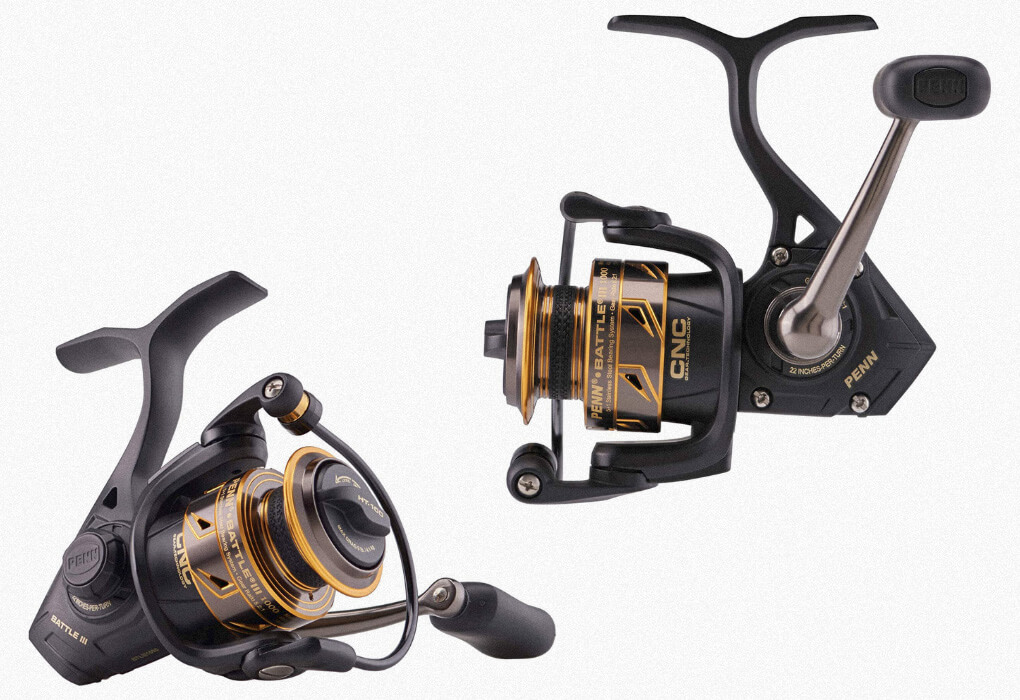
Specs
- Type: Spinning
- Gear Ratio: 4.2:1, 4.2:7, 5.2:1, 6.2:1, 7.0:1
- Weight: 9.7
- Bearings: 5+1
- Line Capacity: 10/165
Pros
Cons
Why We Chose It
The progression of the PENN Battle spinning reels has always intrigued me as they always find a way to improve on what I thought was the perfect reel.
I’ve owned lot’s of PENN Battle reels since they first came out in 2010 and can honestly say that they are stout reels that last.
The Battle lll comes in 12 models with gear ratios of 4.2:1, 4.2:7, 5.2:1, 6.2:1, and 7.0:1. It’s also sold in 12 different sizes so selecting the perfect size reel is easy.
Let’s start out with the first thing that grabbed me when I tried out this reel: the smooth retrieve.
If you’ve ever used the older PENN Battle ll reel, you will notice that the Battle lll is a heck of a lot smoother. That’s because the older model used stock gears that fit together.
The new PENN Battle lll is CNC machined, which means the gears are cut from one block of metal guaranteeing a perfect fit.
They call this CNC Gear Technology because it’s CNC Machined at the factory and the result is a buttery smooth retrieve that makes fishing fun even if you aren’t catching anything.
This reel doesn’t play!
I was able to catch a quick limit of redfish in a duckpond that had water flowing out of it.
I was using a gold Johnson’s Sprite and I was able to set the hook on five redfish with all five making their way to the ice chest.
Three of the redfish were over 20 inches so there I had my work cut out for me but the the HT-100 Carbon Fiber Drag System managed beautifully.
When the redfish made hard runs, the drag pull remained smooth without any sporadic jerks.
Another thing I like about this reel is the Superline Spool which allowed me to spool up with thicker braided line and still manage to get a ton of line on it!
Take note this reel is slightly heavy but that’s only due to the metal sides on the reel.
It’s a tough and durable reel that will last you for decades, however, you’ll want to spray it down with WD40 every once in a while because the metal will corrode after using it in saltwater
If a metal body is a factor in your decision I can point you to the Lew’s Custom Speed Spin Reel which has an all-aluminum body and performs pretty close to the PENN Battle III.
Overall the PENN Battle lll is a fantastic reel and offers so many sizes that it will fit any type of saltwater fish you are targeting, but I find it really excels when targeting redfish.
Add this reel to your saltwater collection and enjoy the redfish battle!
Best Lightweight Inshore Spinning Reel
Shimano Stradic FL Spinning Reel
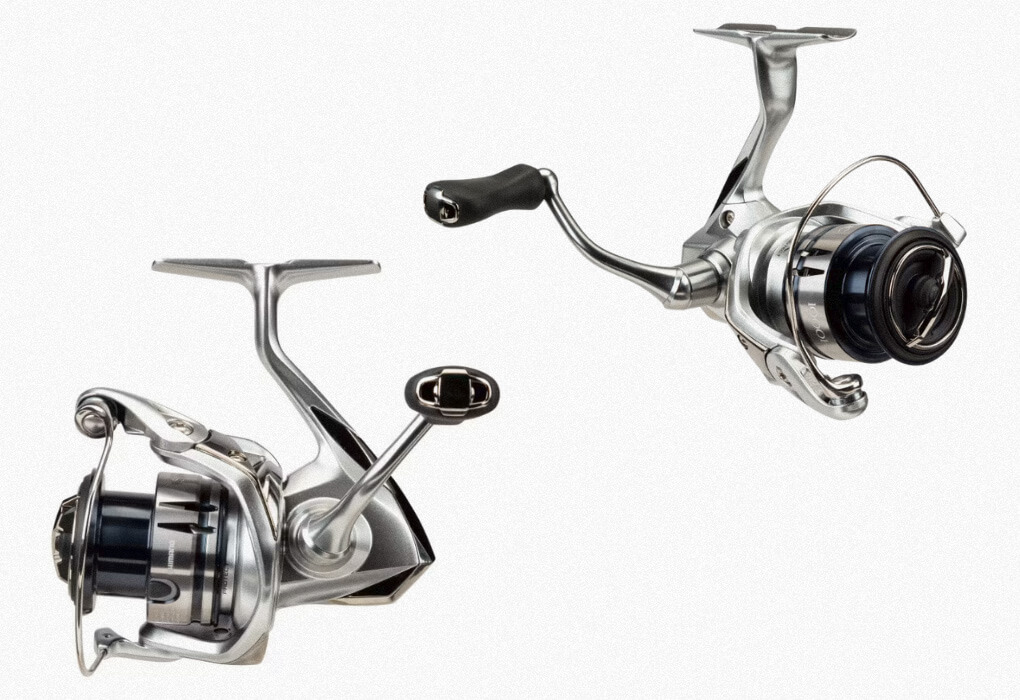
Specs
- Type: Spinning
- Gear Ratio: 6.0:1, 6.2:1, 6.4:1
- Weight: 6.5
- Bearings: 6+1
- Line Capacity: 4/160
Pros
Cons
Why We Chose It
It’s rare to find a manufacturer that makes an inshore reel in a size 1000 but that’s exactly what Shimano has done with the Stradic FL.
Right out of the box I could tell that I was going to have a lot of fun with this little guy.
Usually I target speckled trout and redfish when I fish inshore saltwater but there are times when I need a smaller reel when I’m fishing on the bottom for croaker and white trout.
This reel is perfect for doing that!
I paired this reel with a St. Croix Premier Spinning Rod and fished the bottom using a Carolina rig with dead shrimp.
I had an absolute blast catching a ton of white trout with a few croaker mixed which all went back to the cleaning table at the camp.
The best part about this reel is its weight. The Stradic FL only weighs 6.5oz. Which is awfully close to an ultralight but it fishes stronger than an ultralight.
Shimano has created something called a HAGAN Body which makes the reel work in unison without any play in any of the gears, reel seat, or spool.
To put it simply: the reel is made of very rigid material. This is perfect for the abuse I put my inshore saltwater reels through.
The retrieve is really smooth because of Shimano’s MicroModule Gear System which is made up of smaller teeth and sprockets that engage with one another.
The smaller teeth mean a soother, quieter retrieve. However, while the reel is very, very smooth it also lacks strength so don’t think this reel will cover all your inshore fishing needs.
This is perfect for those looking to catch smaller inshore fish like croaker.
Being a lightweight reel it also lacked drag with only 7 lbs. of drag power which is perfect for what I was using it for but again I would stay away from the larger inshore fish with it.
During my test I was also impressed by the Lew’s Custom Lite Spinning Reel because of its light 6.6 pounds of total weight. But the reel was only available in a 200 series so it was bigger than I needed.
If you’re looking for a lightweight spinning reel for your next inshore adventure check out the Shimano Stradic FL Spinning Reel. It’s built for salt and looks like it has the potential to be a lifetime reel.
How to Choose the Best Inshore Spinning Reel
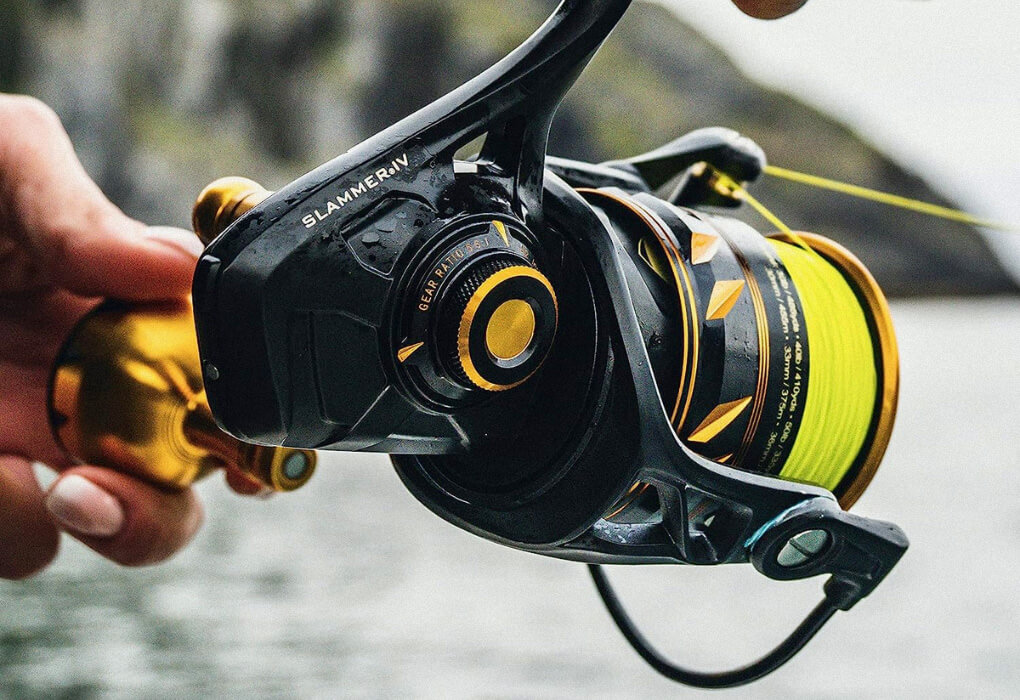
When it comes to choosing the best inshore spinning reel, you’ll need to focus on three main things. One being the material used and how the reel is sealed. And the second being how the drag performs and its power rating.
Material/Sealant
Unarguably, the most important thing to consider when fishing saltwater is the material of the reel and how well it’s sealed to protect against saltwater.
Look for reels that are made of materials that are corrosion resistant.
A helpful hint for finding reels like this is to look for words like Stainless steel, X-Protect waterproofing, and IPX6 Sealed.
Also reels that are specifically designed for saltwater fishing will last longer and hold up to the elements longer than a freshwater reel will.
Drag
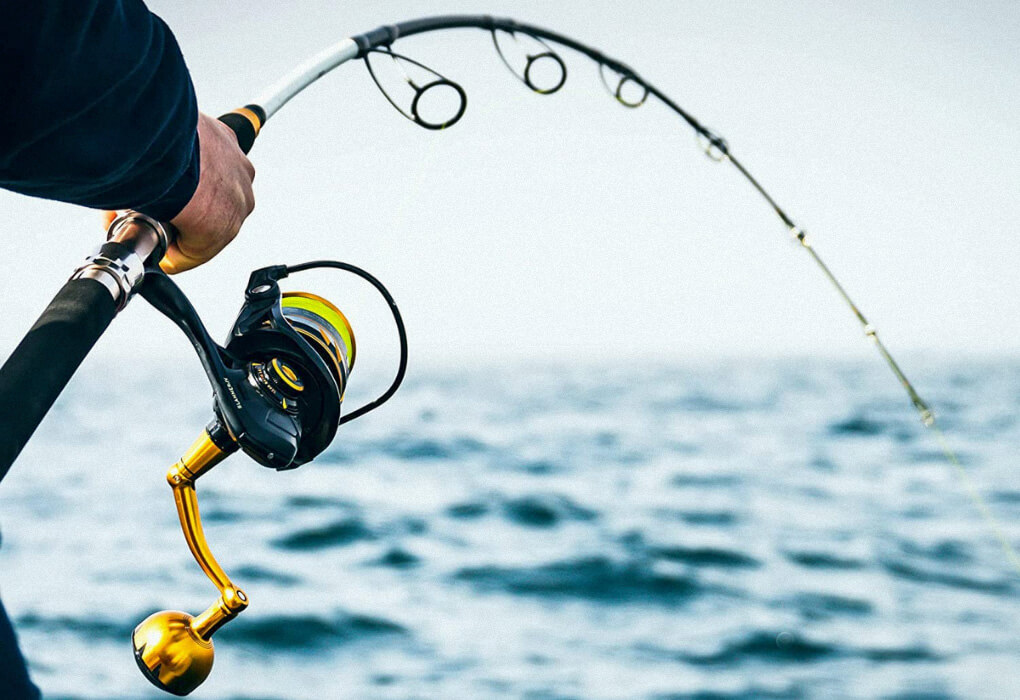
Having optimal and smooth drag is an important feature for all spinning reels but it’s really important when it comes to inshore reels because you’ll be tangling with some larger fish like redfish, trout, and sheepshead.
Ideally, you’re looking for a max drag rating somewhere between 15-25 or higher. Keep in mind that as you get higher the reels generally get larger and heavier.
If you choose an inshore spinning reel with a drag rating that’s too low, it decreases the overall size of the fish you’ll be able to manage.
If you’re after big fish, you might want to size up your reel to the next model level to not only increase the drag but the drive gear and metal body as well.
Final Thoughts
During my week in the marsh I put all of my favorite reels up against some of the newer reels. In the end, I think our top 5 list will help guide you to the best spinning reels for fishing inshore waters.
So let’s review our top pick!
For the best inshore spinning reel overall, I chose the PENN Slammer IV Spinning Reel.
It was an outstanding reel and led the pack when it came to casting ability, a smooth retrieve, and protection against saltwater.
While the Slammer IV won overall, you really can’t go wrong with all the reels mentioned in this best inshore spinning reel guide that we’ve put together.
Give them a try and tell us what you think! We’d love to hear from you!

